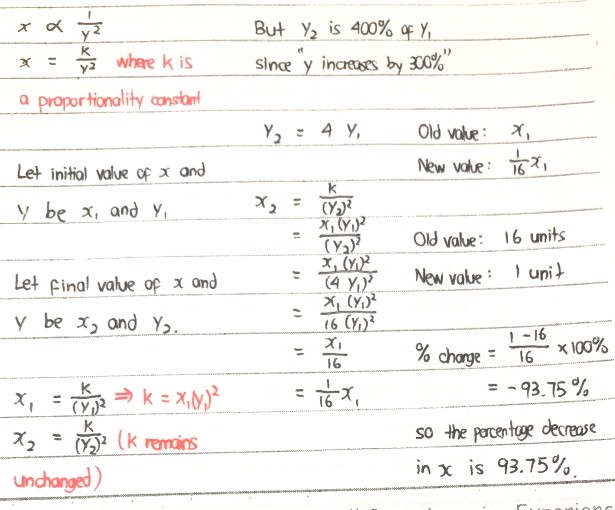Eric Nicholas K's answer to M's Secondary 4 E Maths Singapore question.
done
2 Upvotes
clear 0 Downvotes
First part
Let me know if you need more explanation
Let me know if you need more explanation
Date Posted:
5 years ago



(Starting values are always assigned to be 100%, so if let’s say you start out having $500, then $500 represents 100% of your money)
At the end, y is to be increased “BY 300%”, not “TO 300%”. This means that 100% is being increased to 400%, since there is an increase in percentage points by 300%.
Hence, the final value of y is 4 times the starting value of y. We will need to use this to solve the question for the change in x.
These type of questions are very hard to understand and I believe that a large proportion of all students will get stuck at such questions.
y is like 1 unit.
An increase in 300% means an increase in 3 units.
So the final will be 400%, or 4 units.
If your money increases by 100%, it means your money has increased by $10, for a new sum of $20.
If instead your money increases by 500%, it means your money has increased by $50, for a new sum of $60.
Find the percentage decrease in x if the value of y is quadrupled.
Sometimes they will mention the numerical number to multiply, rather than a percentage number to multiply.